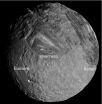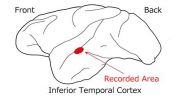(Press-News.org) No one has ever directly observed gravitational waves, phenomena predicted by Einstein's theory of General Relativity, and such a discovery would have profound implications for the study of the Universe. Last March, however, the team behind the BICEP2 project made a ground-breaking announcement: the Antarctic observatory had detected a signal referable to gravitational waves. The study claimed to have excluded possible contaminants (other sources that could have generated the same signal) and that the observation was therefore to be considered genuine. But not everyone agreed and many scientists expressed doubts. To test the observation, the team in charge of analysing the Planck satellite data (in which the International School for Advanced Studies SISSA of Trieste, INAF-Astronomical Observatory of Trieste and the University of Trieste participate at one of the two Data Processing Centres) carried out a series of checks in the same portion of sky observed by BICEP, both at the same and at a higher frequency ranges. The study, now available in the archives (and due for publication in Astronomy & Astrophysics on Monday), in part damps down enthusiasm. "Unfortunately, according to our analysis, the effect of contaminants and in particular of gases present in our Galaxy cannot be ruled out", explains Carlo Baccigalupi, SISSA cosmologist and one of the authors of the study.
The strength of Planck – which provides a coarser-grained picture of the sky compared to BICEP2 – is that it observes the Universe at a very wide range of frequencies (nine bands from 30 to 857 GHz, as against the single frequency of 150 GHz used by BICEP2). And it is precisely this "multiple" image which enabled the Planck scientists to establish that the effect of a contaminant may indeed be at work.
The news is not all bad, however, and could instead prove "fruitful": "we have started a collaboration with BICEP2. We are directly comparing their data with the Planck data, in the same frequency, 150 GHz, and trying to exploit the image of the contaminants we reach with Planck at other frequencies", continues Baccigalupi. "This way, we hope to be able to give a definitive answer. In fact, we might find that it was indeed a contamination, but, given that we're optimists, we might even be able to exclude it with confidence. This way, Planck could give a crucial contribution to the discovery of evidence of gravitational waves from the Big Bang in cosmic background radiation. Such a discovery would open a completely new window onto unknown scenarios in the study of the primordial Universe and very-high-energy physics".
INFORMATION:
Further Information
Planck is a European Space Agency satellite, designed to observe, with an unprecedented degree of accuracy, the Big Bang through cosmic microwave background radiation. Proposed in the early 90s, the satellite and its instruments were developed thanks to huge efforts that involved several national space agencies in Europe coordinated by ESA, whereas the NASA developed the cooling system.
On-ground analysis of the data has been conducted in only two centres in the world, Paris and Trieste. In Trieste, in particular, SISSA, INAF-Astronomical Observatory of Trieste, and the University of Trieste participate in the Data Processing Centre for the low-frequency instrument. In recent years, about fifteen scientists from the three institutions collaborated intensely with continuous exchanges with the rest of the Planck collaboration made up of the world's leading experts in data analysis, computer science, cosmology and astrophysics for a total of over 200 scientists and technicians.
Gravitational waves according to Planck
Data from the ESA satellite measure contaminants in the BICEP2 observation
2014-09-22
ELSE PRESS RELEASES FROM THIS DATE:
Miranda: An icy moon deformed by convection
2014-09-22
Boulder, Colo., USA – Miranda, a small, icy moon of Uranus, is one of the most visually striking and enigmatic bodies in the solar system. Despite its relatively small size, Miranda appears to have experienced an episode of intense resurfacing that resulted in the formation of at least three remarkable and unique surface features -- polygonal-shaped regions called coronae.
These coronae are visible in Miranda's southern hemisphere, and each one is at least 200 km across. Arden corona, the largest, has ridges and troughs with up to 2 km of relief. Elsinore corona has ...
Neurons express 'gloss' using 3 perceptual parameters
2014-09-22
Japanese researchers showed monkeys a number of images representing various glosses and then they measured the responses of 39 neurons by using microelectrodes. They found that a specific population of neurons changed the intensities of the responses linearly according to either the contrast-of-highlight, sharpness-of-highlight, or brightness of the object. This shows that these 3 perceptual parameters are used as parameters when the brain recognizes a variety of glosses. They also found that different parameters are represented by different populations of neurons. This ...
A two-generation lens: Current state policies fail to support families with young children
2014-09-22
September 19, 2014 -- Recent two-generation approaches to reducing poverty that help children and their parents are receiving increasing attention from researchers, advocates, and foundations. By combining education and training for parents to enable them to move to jobs that offer a path out of poverty with high-quality early care and education for children, these programs aim to improve the life opportunities of both. However, according to a new report from the National Center for Children in Poverty (NCCP), State Policies through a Two-Generation Lens, while research ...
Good bowel cleansing is key for high-quality colonoscopy
2014-09-22
Bethesda, MD (Sept. 22, 2014) — The success of a colonoscopy is closely linked to good bowel preparation, with poor bowel prep often resulting in missed precancerous lesions, according to new consensus guidelines released by the U.S. Multi-Society Task force on Colorectal Cancer. Additionally, poor bowel cleansing can result in increased costs related to early repeat procedures. Up to 20 to 25 percent of all colonoscopies are reported to have an inadequate bowel preparation.
"When prescribing bowel preparation for their patients, health-care professionals need to be ...
Online ratings influence parents' choices of physicians for their children
2014-09-22
ANN ARBOR, Mich. – Almost three-quarters (74%) of parents are aware of online rating sites for physicians, and more than one-quarter (28%) have used those online ratings to choose a healthcare provider for their children, according to U-M research published today in Pediatrics.
Using the University of Michigan's C.S. Mott Children's Hospital National Poll on Children's Health, researchers surveyed 1,619 parents about how online ratings of physicians influenced their choices in seeking healthcare providers for their children.
They found that parents had a higher level ...
Hold on, tiger mom
2014-09-22
RIVERSIDE, Calif. — Less supportive and punitive parenting techniques used by some Chinese parents might lead to the development of low self-esteem and school adjustment difficulties in their children and leave them vulnerable to depression and problem behaviors, according to a paper recently published by a University of California, Riverside assistant professor and other researchers.
The study, believed to be the first that provides empirical support to this idea, refutes the idea that the traditional, strict "Chinese" upbringing, which gained widespread attention in ...
Obesity and stress pack a double hit for health
2014-09-22
If you're overweight, you may be at greater risk for stress-related diseases like type 2 diabetes, cardiovascular disease and cancer, according to a new study by Brandeis University.
It's long known that psychological stress can trigger biological responses similar to the effects of illness or injury, including inflammation. While normal inflammation is an important part of our body's healing response, runaway inflammation can contribute to chronic and life-threatening diseases.
In a recently published paper in Brain, Behavior and Immunity, Brandeis researchers observed ...
Environment plays bigger role than genetics in food allergic disease eosinophilic esophagitis
2014-09-22
Researchers have found that environment has a much stronger role than genetics in eosinophilic esophagitis (EoE), a severe, often painful food allergy that renders children unable to eat a wide variety of foods.
Eosinophils are normal cellular components of the blood, but when the body produces too many eosinophils they can cause a variety of eosinophilic disorders. These are disorders involving chronic inflammation and resulting tissue damage, often in the gastrointestinal system.
In an international collaboration involving multiple institutions, researchers at ...
Influenza A potentiates pneumococcal co-infection: New details emerge
2014-09-22
Influenza infection can enhance the ability of the bacterium Streptococcus pneumoniae to cause ear and throat infections, according to research published ahead of print in the journal Infection and Immunity.
In the study, the investigators infected mice with either influenza alone, pneumococci alone, or both at once, and then monitored the populations of bacteria and virus over time. They also monitored the mice for development of middle ear infection.
Influenza infection enhanced the bacterium's ability to colonize the nasopharynx, and to infect the normally sterile ...
New RFID technology helps robots find household objects
2014-09-22
Mobile robots could be much more useful in homes, if they could locate people, places and objects. Today's robots usually see the world with cameras and lasers, which have difficulty reliably recognizing things and can miss objects that are hidden in clutter. A complementary way robots can "sense" what is around them is through the use of small ultra-high frequency radio-frequency identification (UHF RFID) tags. Inexpensive self-adhesive tags can be stuck on objects, allowing an RFID-equipped robot to search a room for the correct tag's signal, even when the object is hidden ...
LAST 30 PRESS RELEASES:
Tea linked to stronger bones in older women, while coffee may pose risks
School feeding programs lead to modest but meaningful results
Researchers develop AI Tool to identify undiagnosed Alzheimer's cases while reducing disparities
Seaweed based carbon catalyst offers metal free solution for removing antibiotics from water
Simple organic additive supercharges UV treatment of “forever chemical” PFOA
£13m NHS bill for ‘mismanagement’ of menstrual bleeds
The Lancet Psychiatry: Slow tapering plus therapy most effective strategy for stopping antidepressants, finds major meta-analysis
Body image issues in adolescence linked to depression in adulthood
Child sexual exploitation and abuse online surges amid rapid tech change; new tool for preventing abuse unveiled for path forward
Dragon-slaying saints performed green-fingered medieval miracles, new study reveals
New research identifies shared genetic factors between addiction and educational attainment
Epilepsy can lead to earlier deaths in people with intellectual disabilities, study shows
Global study suggests the underlying problems of ECT patients are often ignored
Mapping ‘dark’ regions of the genome illuminates how cells respond to their environment
ECOG-ACRIN and Caris Life Sciences unveil first findings from a multi-year collaboration to advance AI-powered multimodal tools for breast cancer recurrence risk stratification
Satellite data helps UNM researchers map massive rupture of 2025 Myanmar earthquake
Twisting Spins: Florida State University researchers explore chemical boundaries to create new magnetic material
Mayo Clinic researchers find new hope for toughest myeloma through off-the-shelf immunotherapy
Cell-free DNA Could Detect Adverse Events from Immunotherapy
American College of Cardiology announces Fuster Prevention Forum
AAN issues new guideline for the management of functional seizures
Could GLP-1 drugs affect risk of epilepsy for people with diabetes?
New circoviruses discovered in pilot whales and orcas from the North Atlantic
Study finds increase in risk of binge drinking among 12th graders who use 2 or more cannabis products
New paper-based technology could transform cancer drug testing
Opioids: clarifying the concept of safe supply to save lives
New species of tiny pumpkin toadlet discovered in Brazil highlights need for conservation in the mountain forests of Serra do Quiriri
Reciprocity matters--people were more supportive of climate policies in their country if they believed other countries were making significant efforts themselves
Stanford Medicine study shows why mRNA-based COVID-19 vaccines can cause myocarditis
Biobanking opens new windows into human evolution
[Press-News.org] Gravitational waves according to PlanckData from the ESA satellite measure contaminants in the BICEP2 observation



